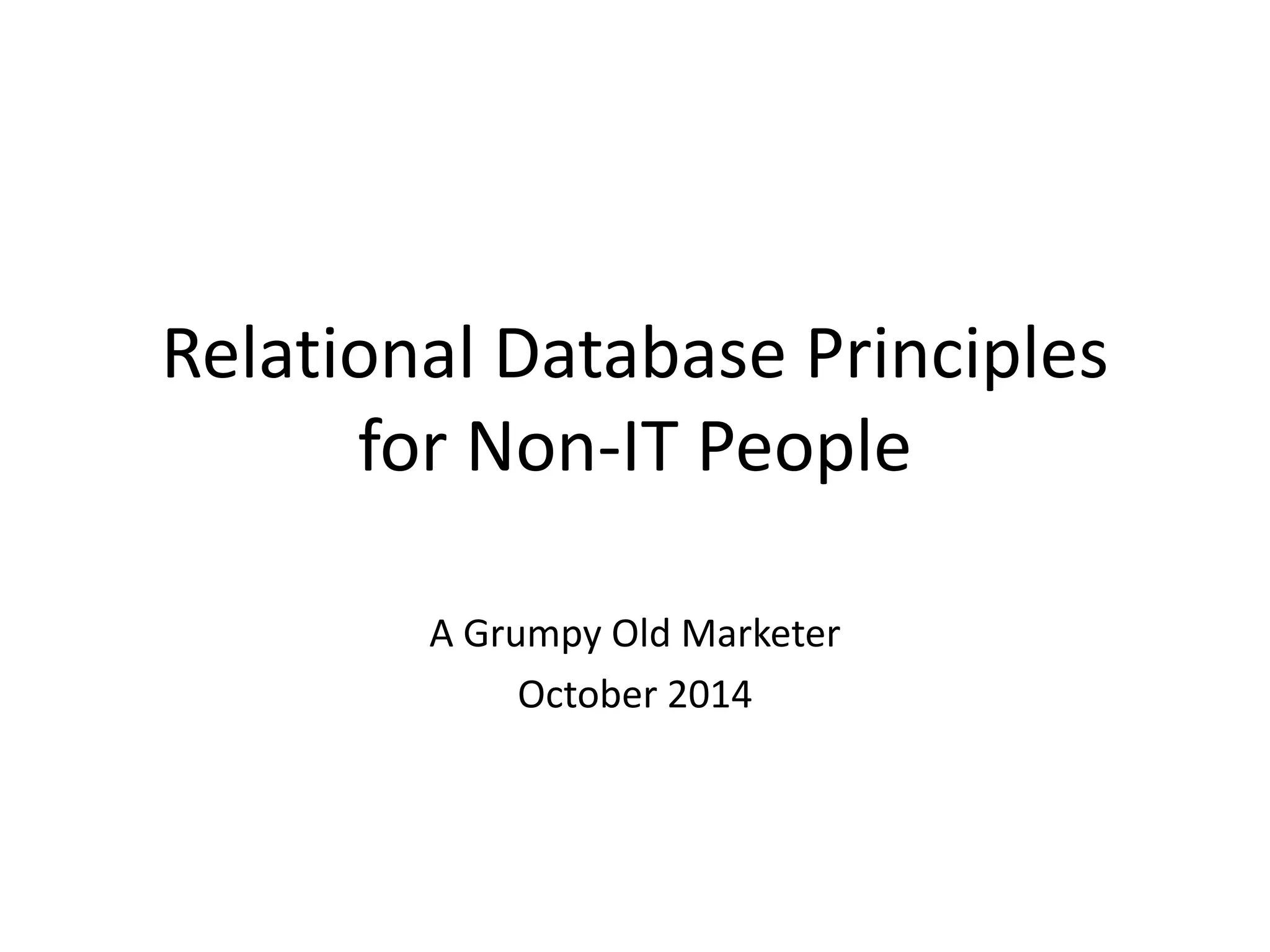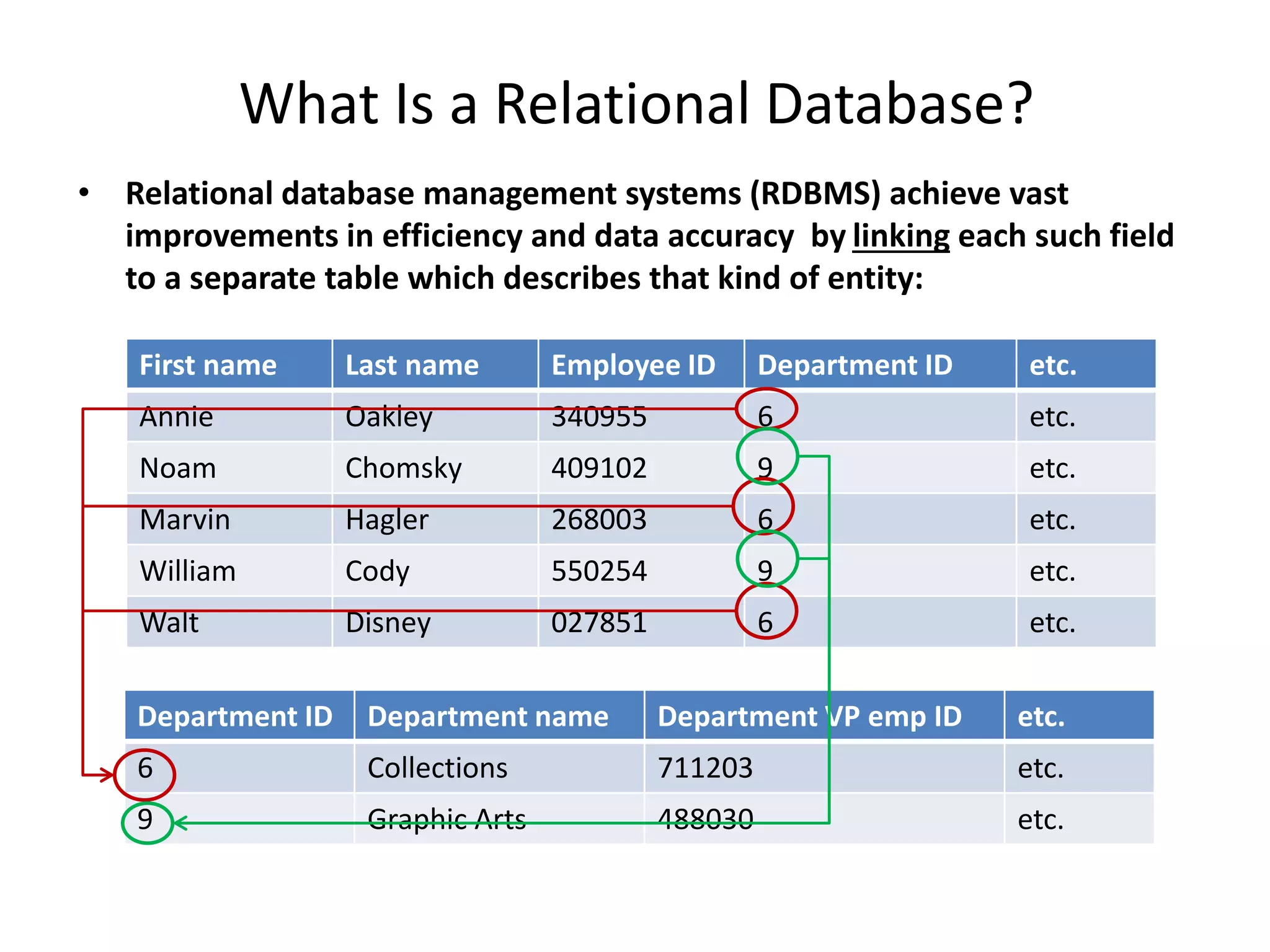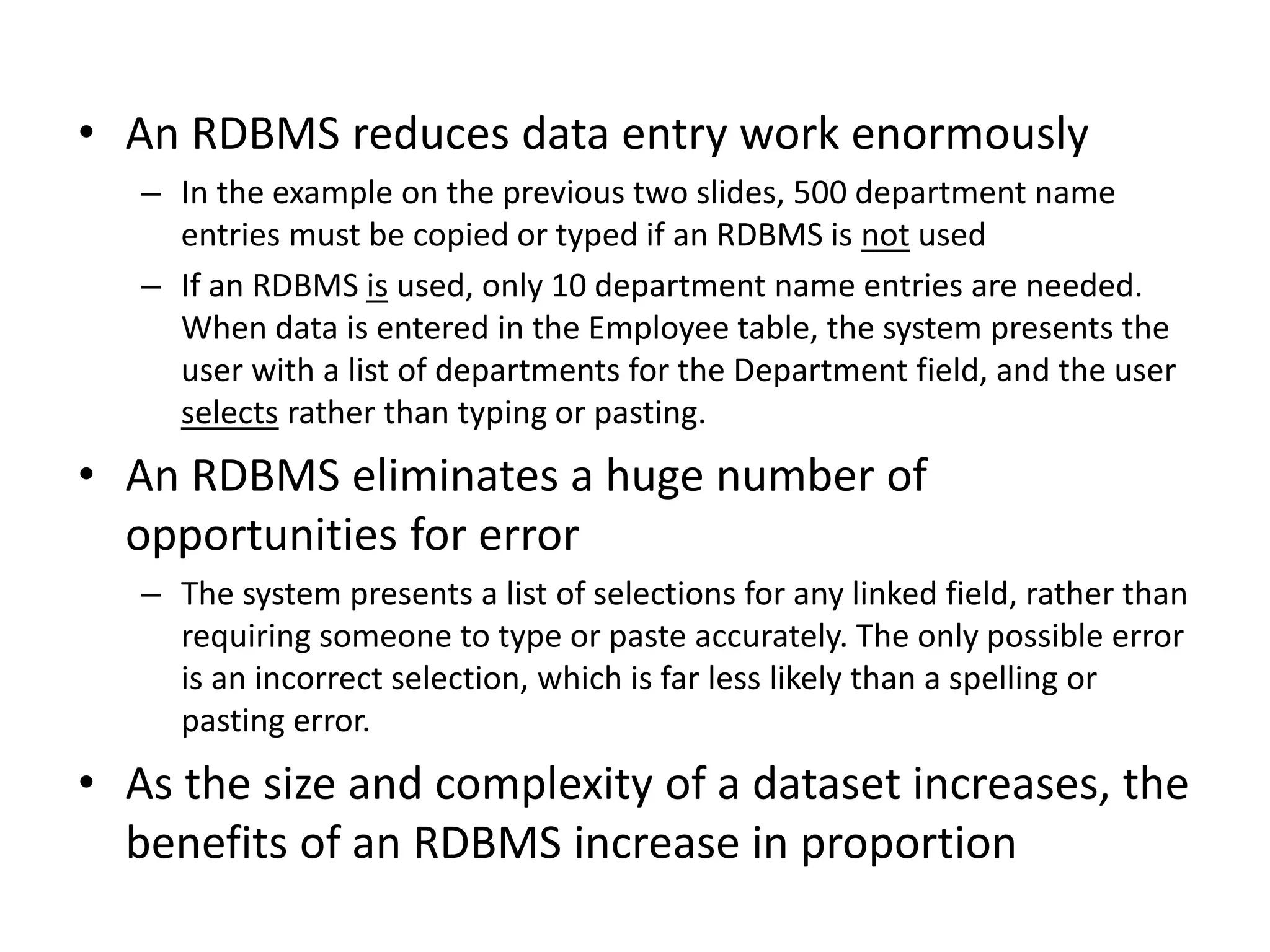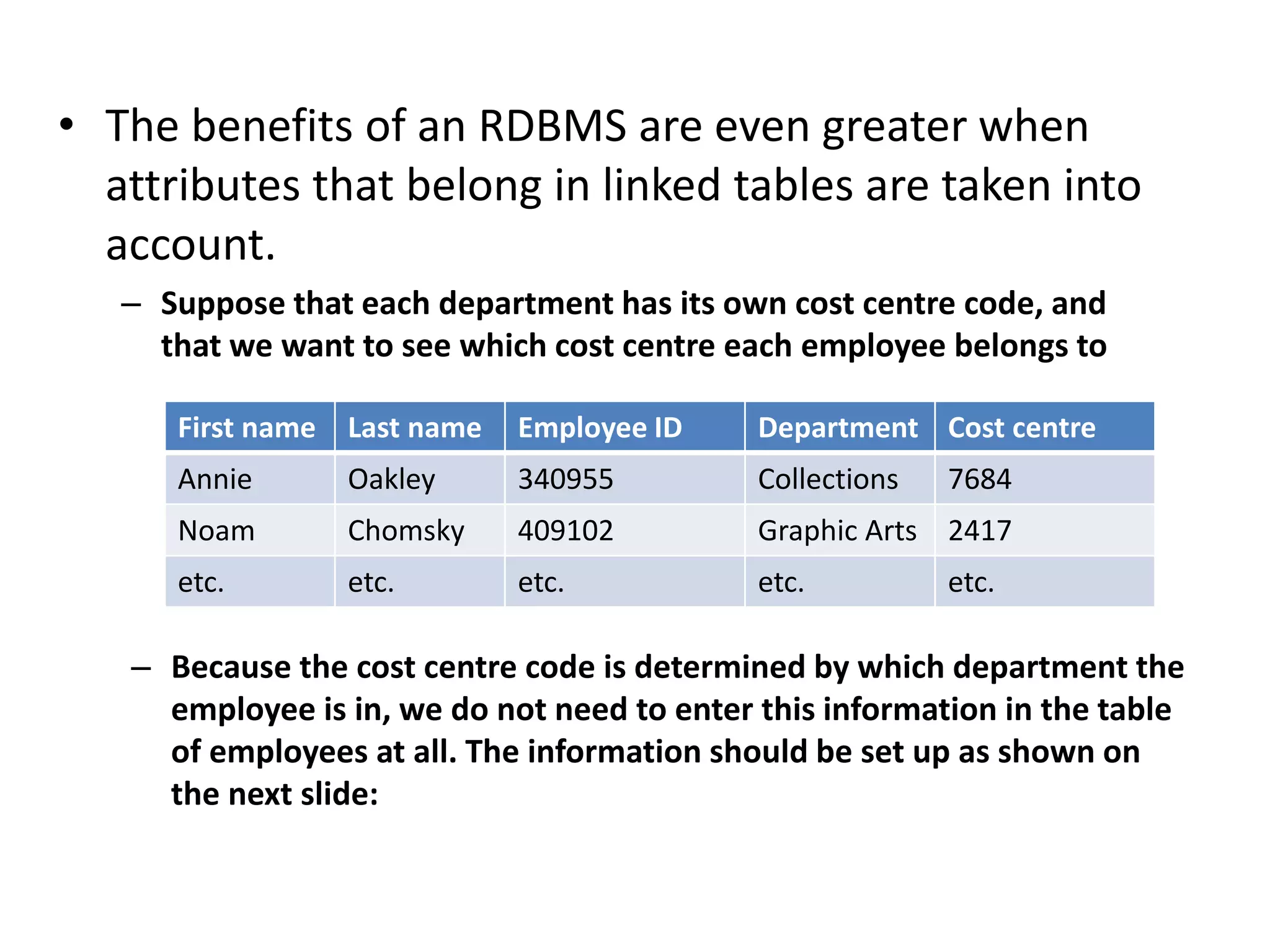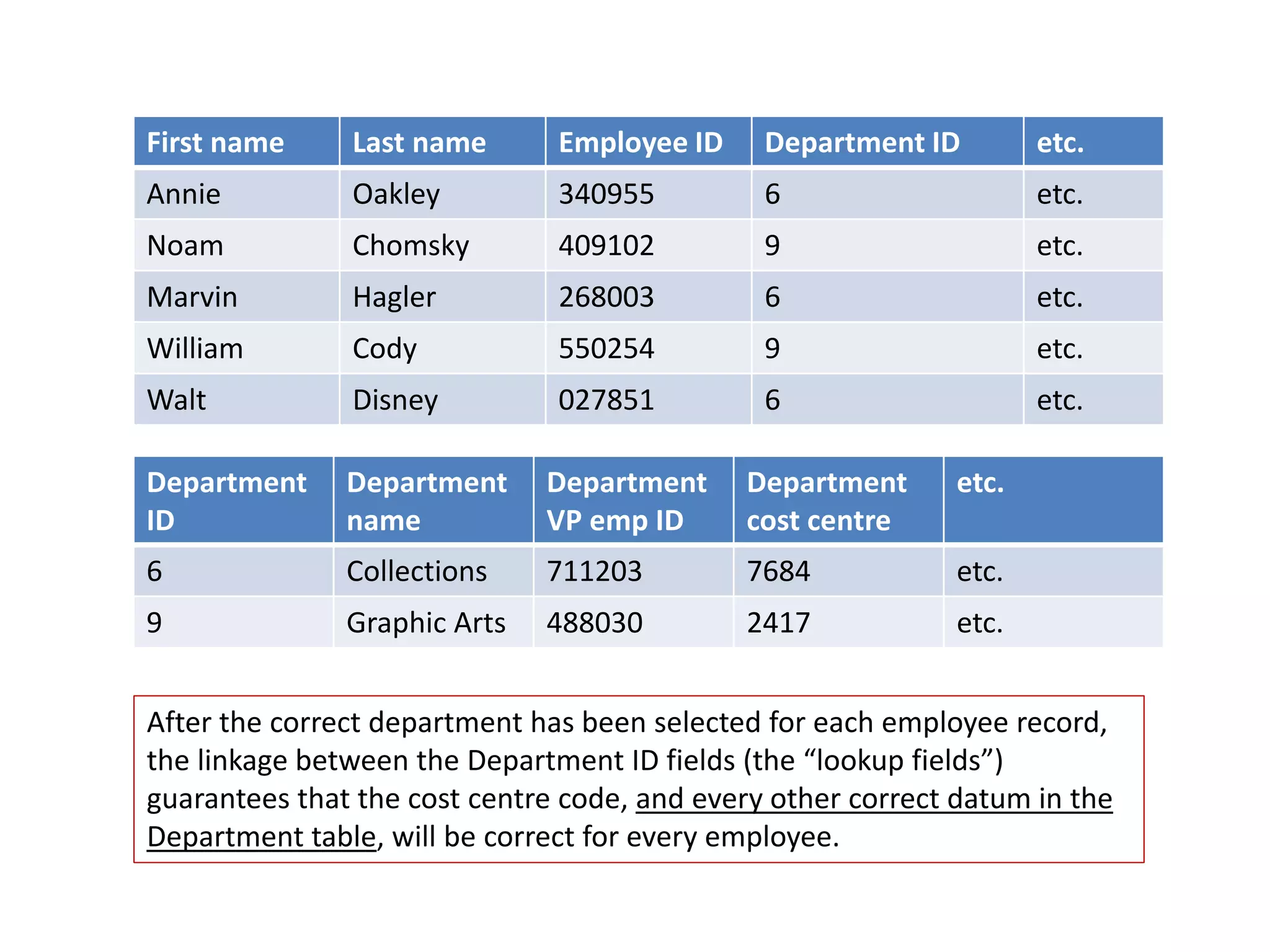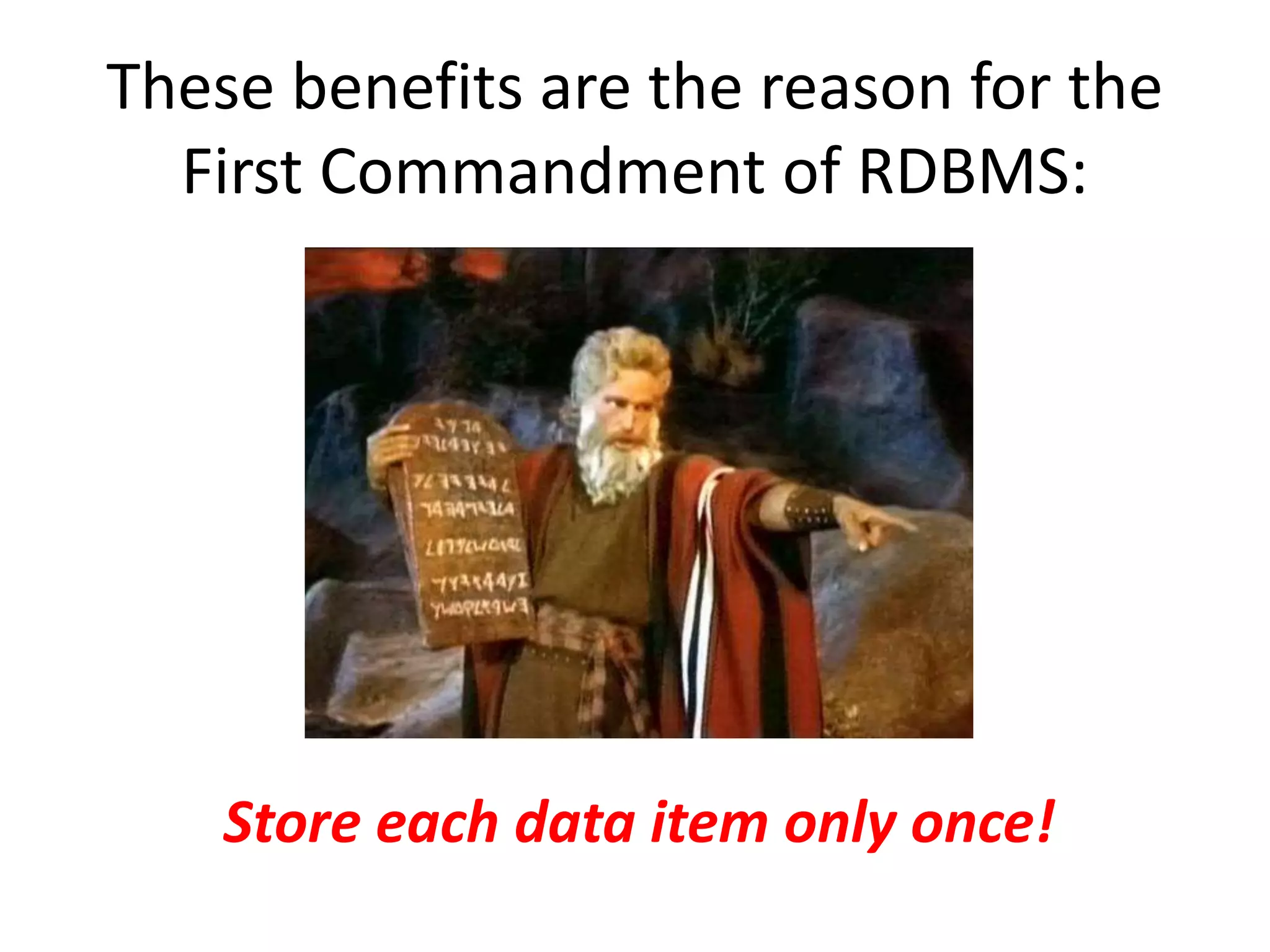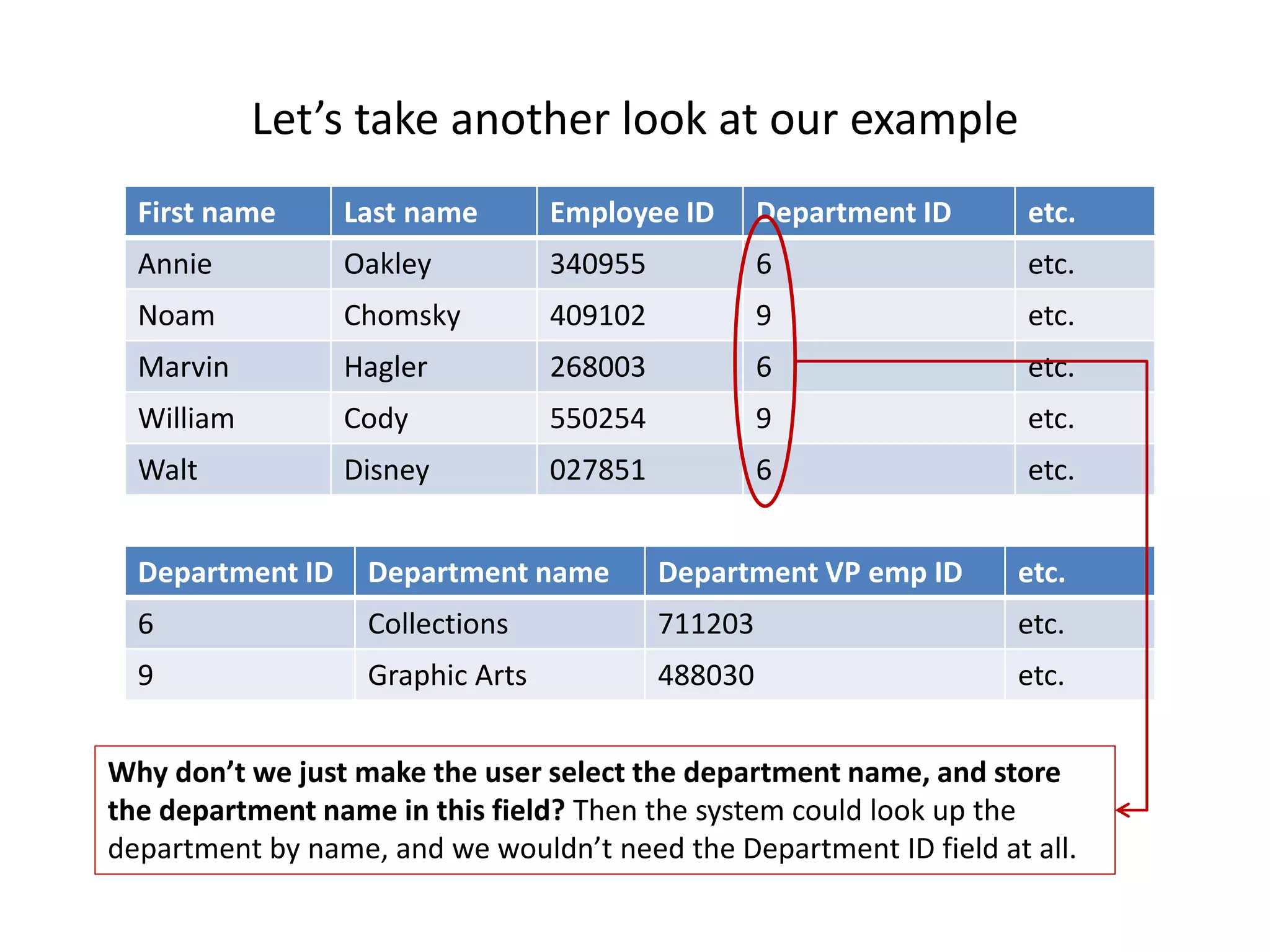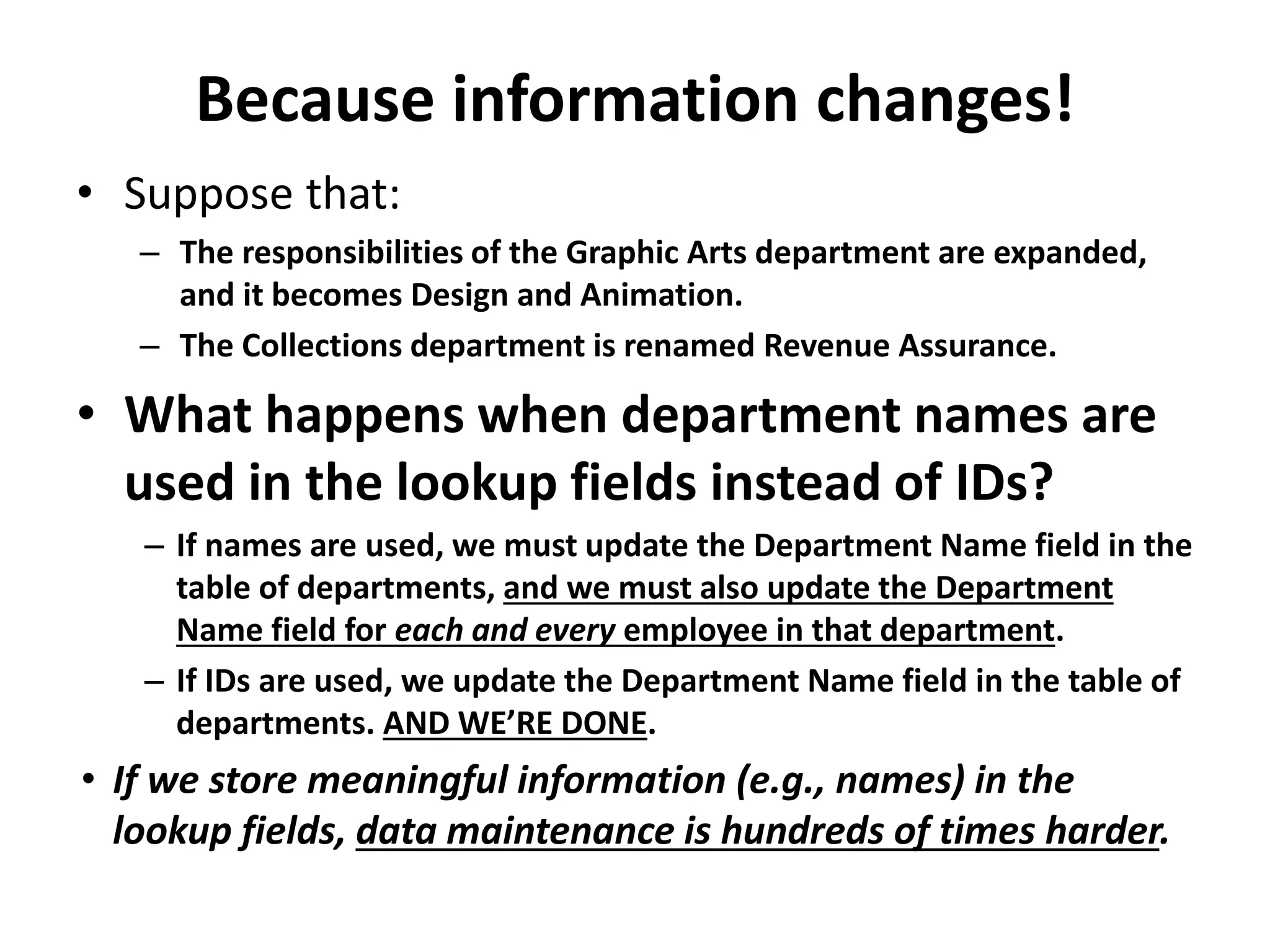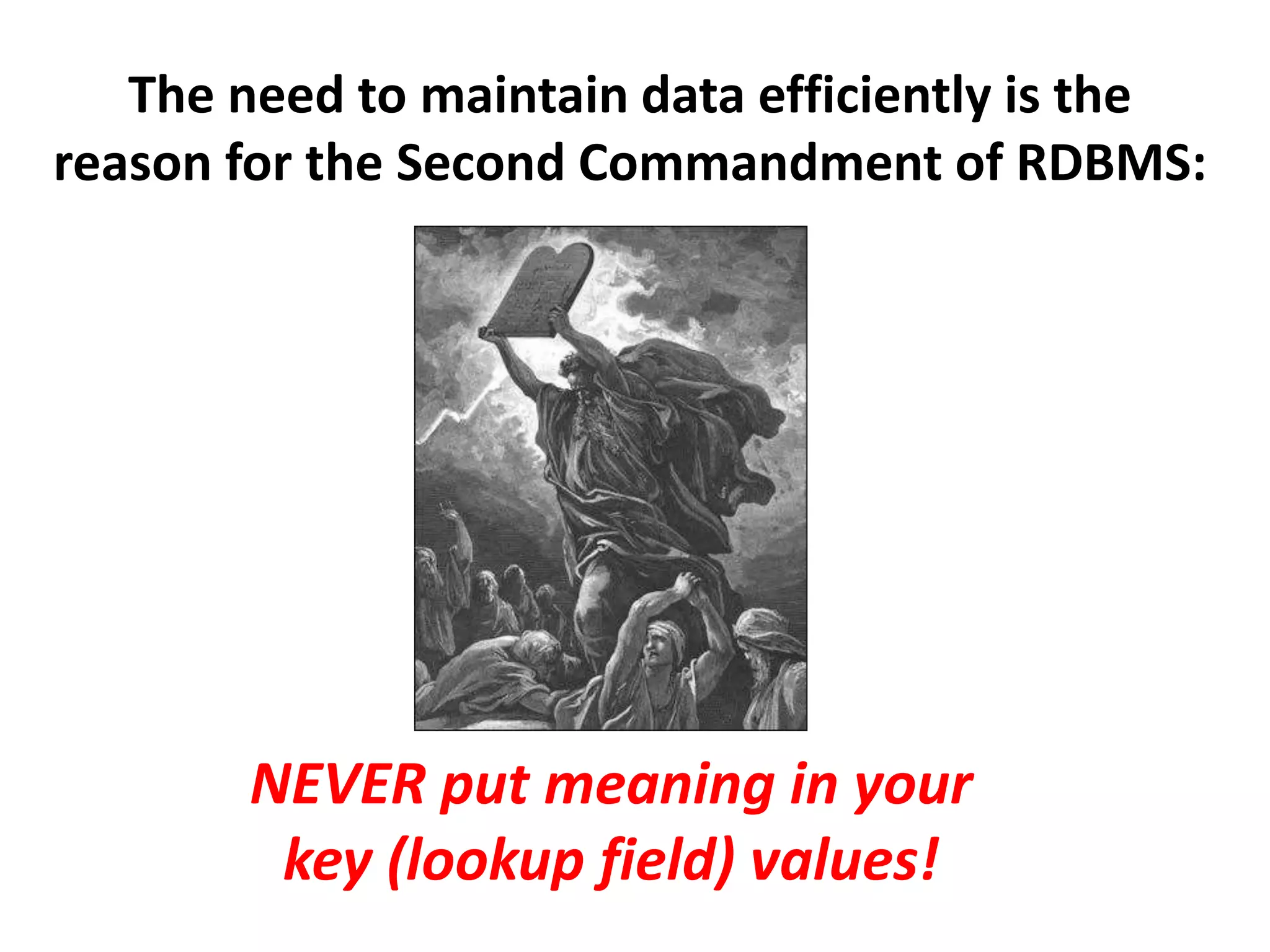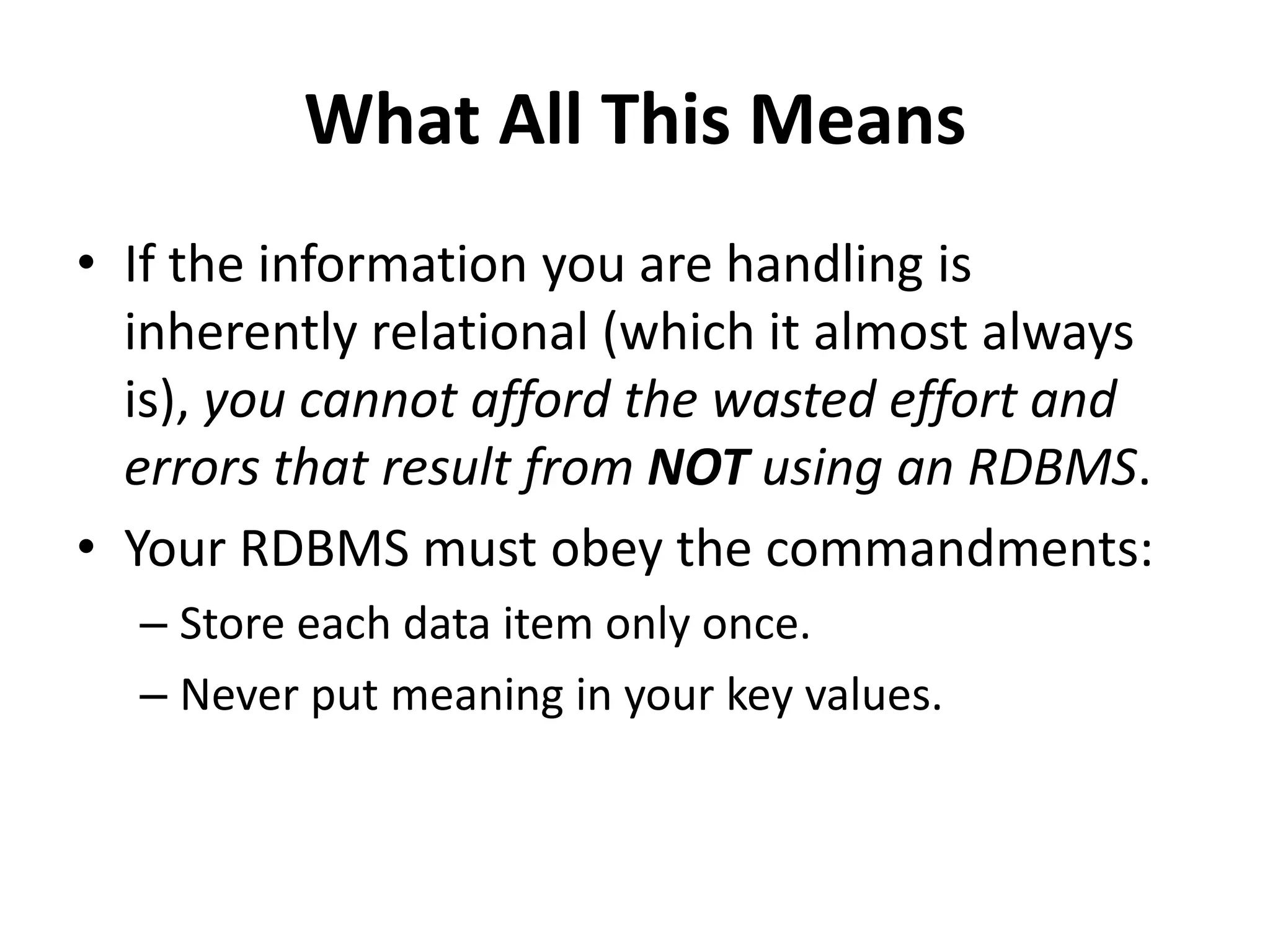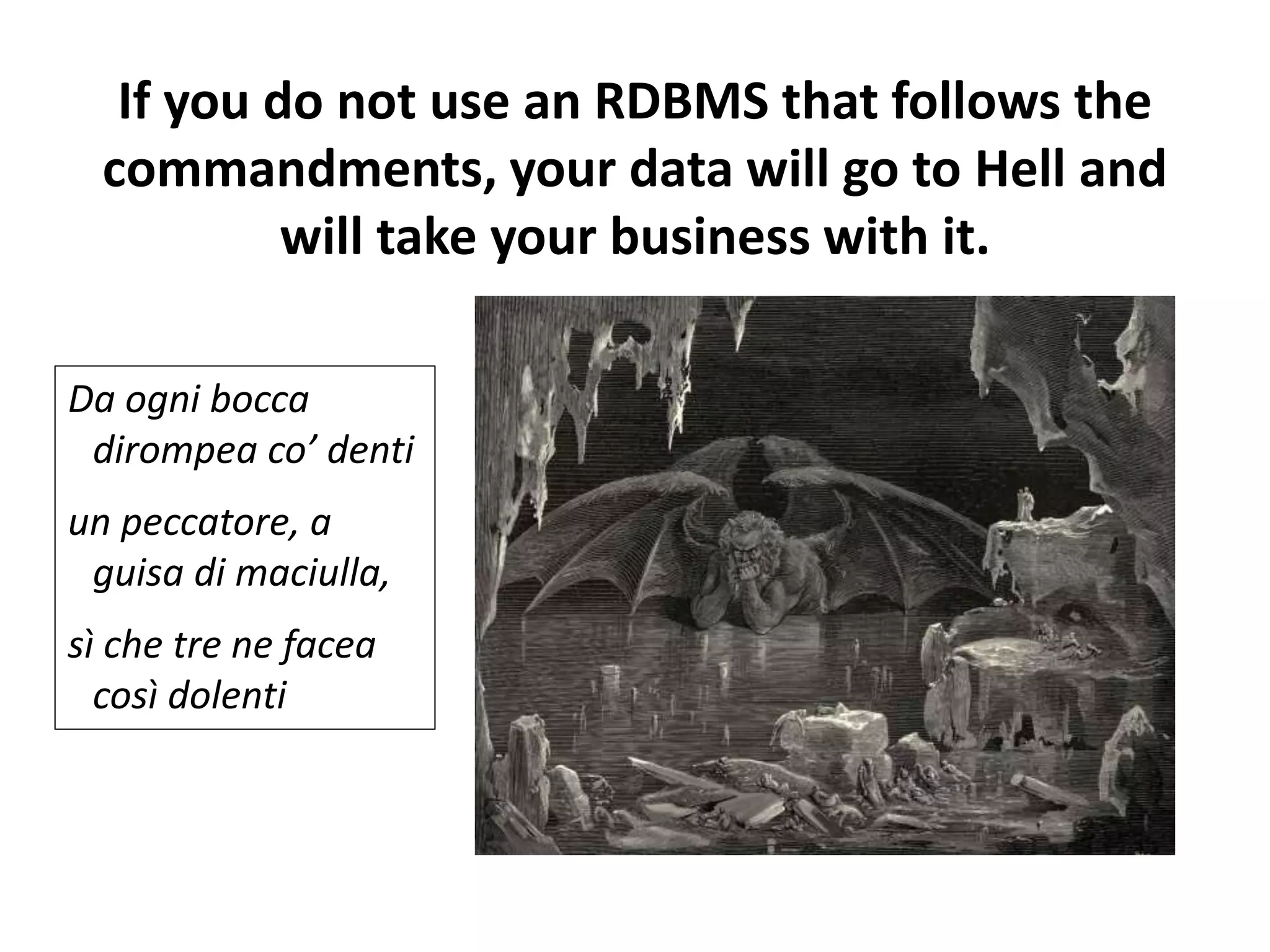The document explains the principles of relational databases, focusing on their efficiency in managing data through linked tables rather than repetitive entries. It emphasizes the need to store each data item only once and avoid using meaningful information in key values to ensure easy data maintenance. Ultimately, it highlights that ignoring these principles can lead to wasted effort and errors, compromising business integrity.
